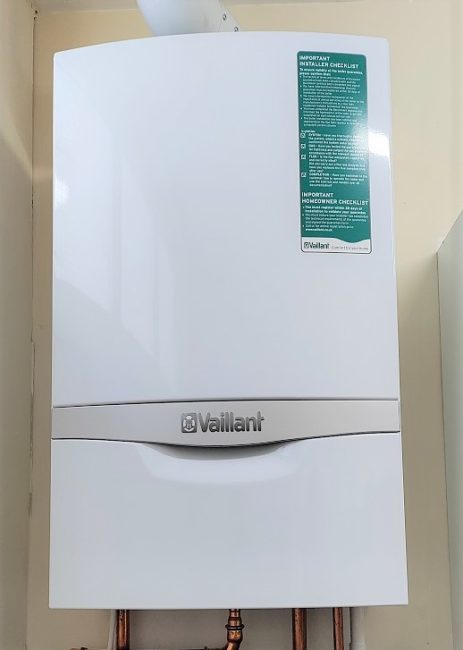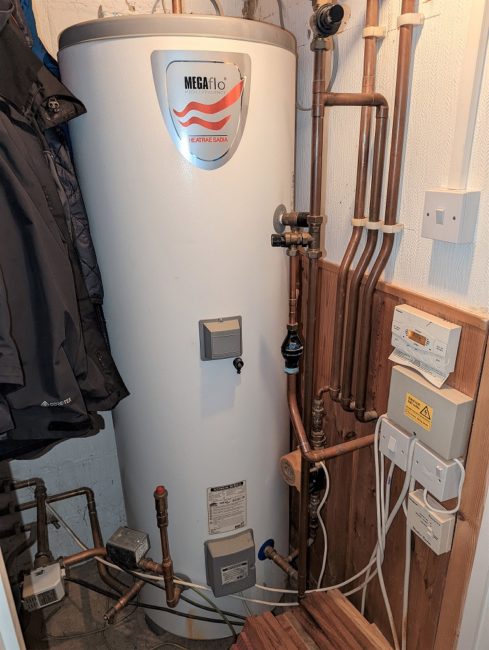In your home you will typically have water fed in from the mains supply which is then used for drinking water, in the bathroom, in the kitchen etc. The ways that this water is heated and distributed through the building can take several forms.
Types of Water Systems
In all of the below systems the heating is considered a ” Closed System” as it is held separately to the rest of the water. The drinking water will be supplied directly from the mains, separately from the water used in the bathroom etc.
There are 3 main types of water systems in UK households.
- Gravity Fed – Low Pressure System
- Combination Boiler – Medium Pressure System
- Pressurised Cylinder – High Pressure System
The 4th System
There is a 4th system but it is rarely used. “Open Systems” are so called because the heating element is fed from the same supply as the rest of the water in the house and is not part of a closed circuit. The water in these systems is normally heated by a water tank behind an AGA or sometimes a burner, and is then distributed through the house. These are typically found in much older houses and often have been replaced by newer systems.
Gravity Fed – Low Pressure System (Approximately 0.1 to 0.4 BAR)
Gravity fed systems take the form of a water tank held in the loft. This water flows down into the various outlets in the building like the shower. These are considered low pressure because they rely on gravity to create pressure. This is described as “head”, and approximately 30 feet of head equals 1 BAR of pressure. So if your water tank is 3 feet above your shower head, you will achieve approximately 0.1 BAR of pressure from that outlet.
It is possible to install a pump which uses an impeller to increase the water pressure where it’s not possible to increase the head. Electric showers can also be utilized to increase pressure at that specific point but these will bypass the tank entirely and are fed by the mains supply.
Gravity fed systems can be easily identified by a water tank in the loft space and sometimes by the presence of a jacketed boiler in the house which is heating the water. However some other types of boiler may resemble these so the water tank is the definitive trait.
Combination Boiler – Medium Pressure System (Approximately 0.5 to 1.5 BAR)
Combination boilers are becoming increasingly common and virtually any new house will use one rather than a gravity fed system. This system relies on the mains water pressure and so will supply hot water at the same pressure. The main advantage is that because of this, both the hot and cold pressures will be the same at the outlets, and the hot water flow warms up more immediately as it heats the water on demand. These systems are gas heated and can be identified by the boiler being much smaller than the older jacketed boilers, often a large white box with a display on the front.


Pressurised Cylinder – High Pressure (3+ BAR)
Pressurized cylinders present exactly as they sound, a large cylinder that feeds from the mains supply and stores the water in a pressurized space. The water is heated by either an electric or gas element, and in some instances can be both. The main advantage to this system is that it supplies a higher pressure and the same pressure to both hot and cold outlets.
Sometimes the system can fall short if the mains water pressure is too low, however this can be rectified by adding an additional tank and pump which stores water separately and adds it to the tank at a higher pressure than the mains when demanded. In a combination boiler, any overflow of steam or water is vented out by a pipe or similar. In this system there is an overflow vessel which this excess is funnelled into and stored for reuse.
A Note About Water Pressures
Different bathroom manufacturers will determine Low, Medium and High pressures by different values, albeit similar. The rating for their fixings, taps etc. will typically be explained in their product catalogues so that you can find the right items to match your system.
You can read more about water pressure in our handy blog post; Water Pressure and Flow Rate
